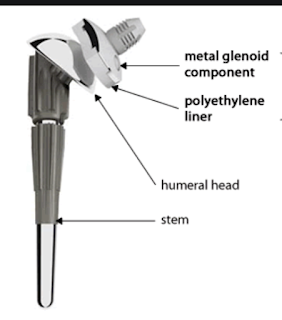These authors used the New Zealand Joint Registry (NZJR) data from from January 2000 to December 2017 to compare all-cause revision rates and functional scores for total shoulder arthroplasty (TSA) and investigated the trends of glenoid fixation used in New Zealand.
A total of 2613 TSAs were performed for OA during the study period, representing 85.0% of all TSAs in New Zealand. 69.6% of glenoids were cemented and 30.4% uncemented. The most common uncemented MB glenoids were the SMR 86.6% (LimaCorporate) and the Bigliani-Flatow.
The most common cemented glenoid components were Global (DePuy) 49.8% and Aequalis.
The revision rate for TSA with uncemented glenoids was significantly higher at 2.03 compared with cemented at 0.41 per 100 component-years.
The hazard ratio was 5.0 for revision of uncemented glenoids.
The most common mode of failure was glenoid loosening in cemented glenoids (44.4%), and component failure in uncemented (34.8%).
Revision for rotator cuff, deep infection, and instability were comparable between
groups.
When excluding SMR L2, uncemented MB glenoid all-cause revision rates remained significantly higher than cemented (1.42 vs. 0.41 per 100 component-years, P < .001). SMR L1 uncemented MB glenoids had a higher revision rate than the non-SMR uncemented glenoids (1.61 vs. 0.18 per 100 component-years.
Uncemented glenoid use peaked in New Zealand in 2011 at 46.7% of TSAs but declined to 20.1% in 2017.
Comment: These data reinforce prior studies showing the superior survivorship for cemented cross linked all-polyethylene glenoids (see data below from the Australian Orthopaedic Association).
Our approach to total shoulder arthroplasty is shown in this link.
To subscribe to this blog, enter your email in the box to your right that looks like the below
===
How you can support research in shoulder surgery Click on this link.
We have a new set of shoulder youtubes about the shoulder, check them out at this link.
Be sure to visit "Ream and Run - the state of the art" regarding this radically conservative approach to shoulder arthritis at this link and this link
Use the "Search" box to the right to find other topics of interest to you.





